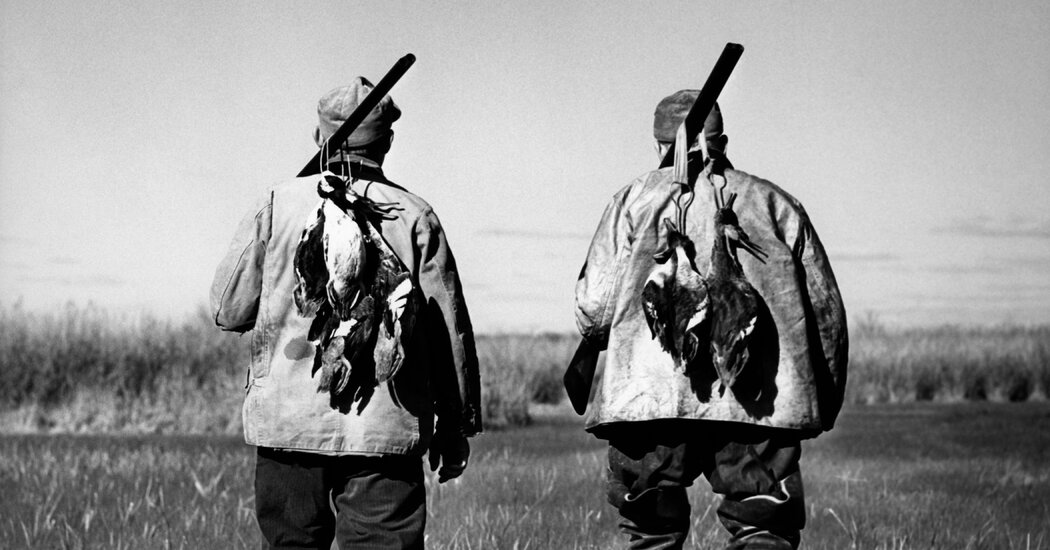Let’s Stop Paying for Wildlife Conservation Through Gun Sales

Regardless of whether they hunt, gun buyers have long underwritten efforts to conserve and restore American landscapes for hunting with an excise tax that manufacturers pay on the guns, ammunition and archery equipment they produce. For the 2022 fiscal year alone, this tax generated a record $1.1 billion, nearly all of it from guns and ammo.
The tax is now facing a challenge, with several dozen Republicans in Congress pushing legislation that would eliminate it as an infringement on the Second Amendment.
Eliminating it would be a good thing — but not for the benighted reasons that inspire conservative ideologues obsessed with gun rights.
Hunters were among the principal users of public lands when Congress imposed the tax 85 years ago, with the passage of the Pittman-Robertson Act. It seemed reasonable, then, to make them pay for their use of the public domain.
But as hunters have become an increasingly smaller slice of American gun owners, it seems reasonable now to ask if they should continue to benefit from a windfall largely financed by gun buyers who don’t hunt. Nearly 19 million guns were sold in the United States last year, a number surpassed only in the previous year, when 21.8 million were sold. Most of these weapons will never be used to fell a deer or duck. More than a few will be used to shoot humans.
Should the sale of a product that today is responsible for so much bloodshed, mayhem, fear and social division be tied to the financing of conservation? These ethical concerns were posed recently by two academics, John P. Casellas Connors of Texas A&M University and Christopher M. Rea of Ohio State University, in the journal Conservation and Society. They noted that the Pittman-Robertson tax has become “evermore bound up with the politics and production of guns, which is itself embedded in broader patterns of social violence.”
The law imposes an 11 percent excise tax on long guns, ammunition and archery equipment and a 10 percent levy on pistols. It was passed in 1937, when American wildlife was in steep decline and efforts were underway to modernize the science of wildlife management. Leading conservationists, including Aldo Leopold, supported it.
The model has gone off the rails, however, because of the collapse of hunting as a cultural tradition.
A survey by the U.S. Fish and Wildlife Service found that 11.5 million Americans ages 16 and older said they hunted in 2016, about 4 percent of the population. This was half the number of hunters in the 1960s. An estimated 28 million people 16 and older, or nearly 9 percent of the population, participated in target shooting; the law also includes funds for the construction or maintenance of public shooting ranges. Moreover, the agency reported that total expenditures by hunters declined 26 percent from 2011 to 2016, from $35.3 billion to $26.2 billion. That includes guns and ammo.
By contrast, between 2011 and 2016, “the most substantial increases in participation” in “wildlife-related activities” involved “observing and photographing wildlife,” which surged 20 percent, according to the Fish and Wildlife Service survey. Unsurprisingly, spending by wildlife watchers rose too, by 29 percent, from $59 billion to $76 billion on equipment and trip-related expenses.
Far from catering to this growing group, however, many wildlife agencies instead direct the bonanza from skyrocketing gun sales to serve hunting and fishing interests.
Nearly 80 percent of the guns-and-ammo tax revenues sent to state fish and game agencies each year are earmarked for wildlife restoration, which means, in essence, that these agencies manage their lands to maximize populations of game species sought by hunters and fishers. (Some agencies are mandated to do so under their state laws.) But given the biodiversity crisis we face, and given that so many more of the people using these lands want to protect the variety of life in the world, the focus should be on conserving all species and ecosystems.
Creating a habitat for select birds and mammals that hunters want to kill typically involves the disruption of ecosystems. State wildlife agencies log, burn, mow, mulch and apply herbicides to manage native vegetation, actions that are harmful to the climate, biodiversity, soils and water quality. These agencies see such mechanized “treatments” as necessary so that the numbers of certain species can be inflated and then killed.
Another roughly 20 percent of the funds go to grants for hunter education, which has led to a proliferation of shooting ranges on public lands across the country. Although lead ammunition was outlawed in the United States for hunting waterfowl in 1991, spent lead ammo from other hunting continues to poison wildlife. In June, an organization of doctors in Texas and two environmental groups petitioned the Department of the Interior to end the use of lead ammunition on national wildlife refuges. The gun and hunting industries and their political allies adamantly oppose such a ban, which is telling as to their position on the value of nongame species.
One way to get the attention of fish and game agencies, and to address the issue of funding conservation through gun sales, is to repeal the Pittman-Robertson Act. Let these agencies instead rely on direct appropriations from Congress, which will make them accountable to more than the hunting, fishing and gun interests. Then perhaps these agencies will use more of their money to protect all of the biotic communities on these landscapes, not merely game species in artificial abundance for inevitable slaughter.
Christopher Ketcham, a freelance journalist, writes at christopherketcham.com andis the author of “This Land: How Cowboys, Capitalism and Corruption Are Ruining the American West.”
The Times is committed to publishing a diversity of letters to the editor. We’d like to hear what you think about this or any of our articles. Here are some tips. And here’s our email: [email protected].
Follow The New York Times Opinion section on Facebook, Twitter (@NYTopinion) and Instagram.
